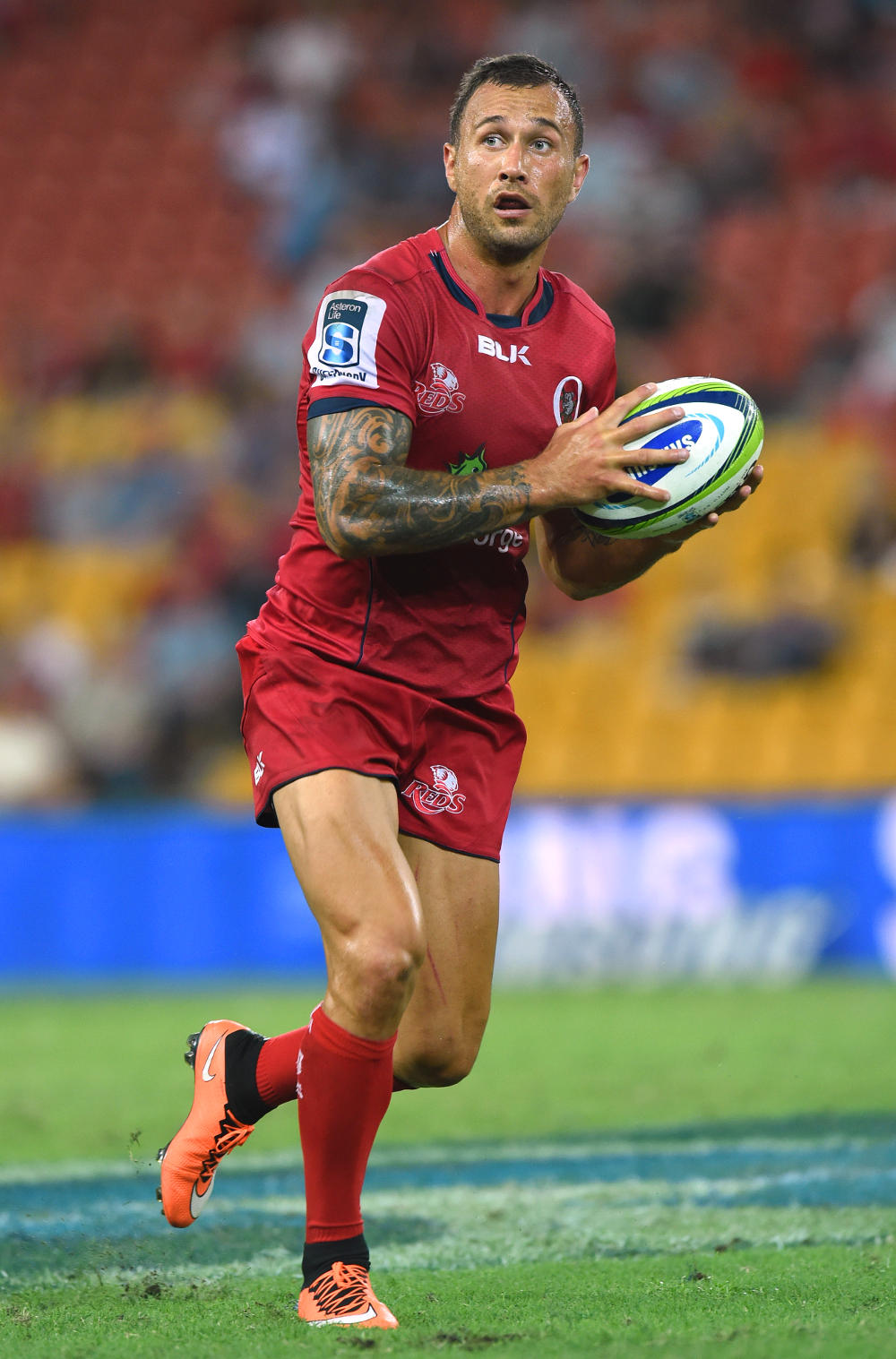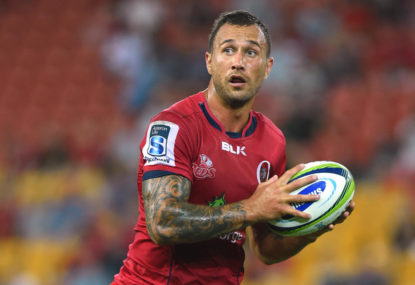Some surprise results and some impressive showings around the grounds in Round 8 helped put the focus back on actual on-field rugby this weekend, a welcome change from the potentially life-changing distractions going on off it.
It was wonderful to see the Melbourne Rebels playing with all the passion and all the emotion of the very strongly-worded statement the club put out on Friday evening.
Finally, this side that promised so much before the season kicked off had managed to play out a game, and in the process, completely shut down a Brumbies side that seemed to find itself caught between the two game plans it now claims it has available.
And that was what started me thinking about the headline question. In fact, the more I started thinking about this question, the less I thought about another nagging one. And I do want to ask you guys the other nagging question, but I’ll save it for the end.
So, who is the form Australian side currently? The weekend’s results don’t offer much of a guide, because the three teams that took the field played almost nothing like their previous outings. The ‘form is temporary’ part of the old adage might have been written with Australian rugby in mind.

The Brumbies sit seven points clear atop the conference, yet a lack of quality ball against the Rebels meant they couldn’t play the same up-tempo style from the week before, and an excellent Rebels defensive second half only added to the pressure the Brumbies’ ordinary kicking game brought upon themselves.
The selection of a 6-2 bench for the match was a fair indication of the way the Brumbies expected to play the game, but they confounded this with an inability to bend the line. They more they tried to play wide, the more ground they lost, which in turn gave up more penalties, which invited Reece Hodge to have seven shots at three points.
The Rebels looked a lot better in attack with Jack Debreczeni consistently going to the line once in the Brumbies’ half, but their execution in attack remains as big an issue as their set piece did for all bar the last ten minutes.
The Reds are unquestionably a better side with Quade Cooper steering them around, but after running up 47 points in the first hour of the game, you do have to question what happened in the last twenty minutes, where they shelled 17 points to a Kings side that always seems to leave their run too late.

And the Force and Waratahs had the bye, which cost both teams a position on the Australian conference table. The Force are arguably more consistent this season, but does that carry over a bye week?
The form team this week is probably the Rebels, in that they played a more complete game to beat the Brumbies, even if it contained more than a few areas of concern that have plagued them in previous outings.
Any momentum the Brumbies took out of the big win over the Reds is gone, while on the other hand, the Reds made the second-most handling errors for the round, and missed the second-most number of tackles to beat the Kings.
So, what do the stats say, then?
Well, the first recommendation I’ll make is that there is nothing to benefit in looking at the Australian sides’ stats alongside the rest of the competition. It just doesn’t read well by any measure, and besides, it’s been clear for several weeks already that the conference title is the biggest prize available; to take out the conference, you only have to be better than four other teams.

What the stats do show is two clear approaches to playing over the first part of the season. The Reds and Waratahs are carrying more than the other three teams, and making more metres as a result. They also lead the Australian teams in terms of clean breaks and defenders beaten, which is no great surprise.
The Force and Brumbies have been playing more of a field position game in the first eight rounds, and haven’t carried near as much. And nor have they made near as many handling errors, with the Reds and Waratahs again much higher in this measure.
Defensively, the Brumbies and Force are missing fewer tackles per game, though interestingly, this isn’t stopping the Force conceding tries.
The Rebels are kind of sitting in the middle of these two groups, and that probably reflects the way they’re playing. They’re not getting enough ball to attack as much as they want to, and they’re missing too many tackles to build pressure anyway. Which, just to underline the main question here, makes their win over the Brumbies even more impressive.
Stats can say anything you want them to, of course, but for this exercise they’re not necessarily helping; they certainly don’t give any real hint of form, and if anything, highlight the same general Australian deficiencies. The teams kicking more are scoring the same number of tries as the teams playing more ball-in-hand, essentially.
Therefore, the question is best left rhetorical. All five teams have been very up and down this season, and there’s a fair distance between those individual up and downs. And this means two things, as far as I can surmise.
The first thing is that there is clearly a lot of improvement in all five sides over the remaining nine rounds of Super Rugby, and the second is that with just seven more rounds until the June Tests, we’re potentially looking at the most open Wallabies selection race in years. Plenty of incumbent Wallabies are front and centre in the indifferent form of their teams, and it doesn’t feel like there are any certainties in any position currently.
And I reckon that actually makes the next seven weeks all the more intriguing.
Nearly as intriguing, in fact, as the other nagging question.
With the Rebels’ Friday night statement clearly stating their intention to fight to the death, and the Force’s application for an injunction – literally, a stay of execution – already in play, what is the ARU and SANZAAR’s contingency plan?
It’s a serious enough question in its’ own right, never mind bringing South African politics into the discussion.
What happens in for the 2018 season if legal action is still unresolved and Australia still has five teams expecting to play Super Rugby? Likewise, or even alternatively, if South Africa can’t get down to four teams from six?
Do SANZAAR have a plan B?
































































































